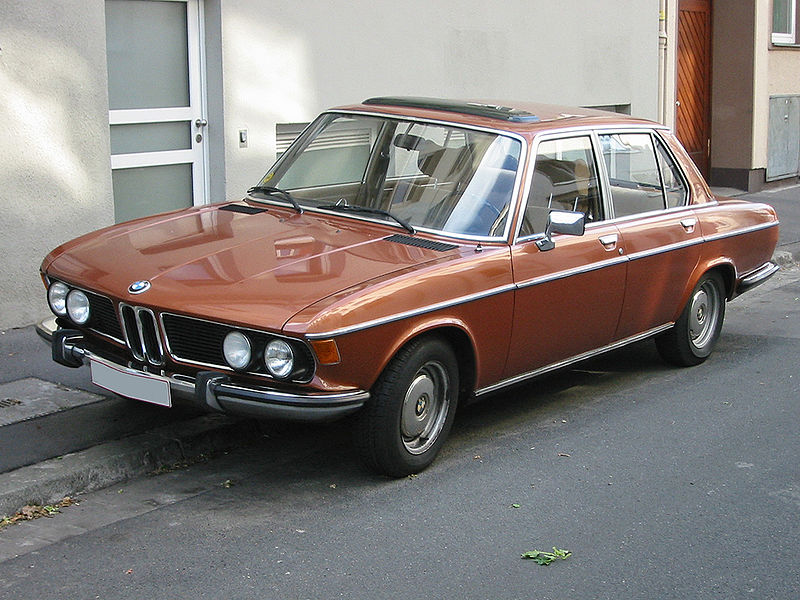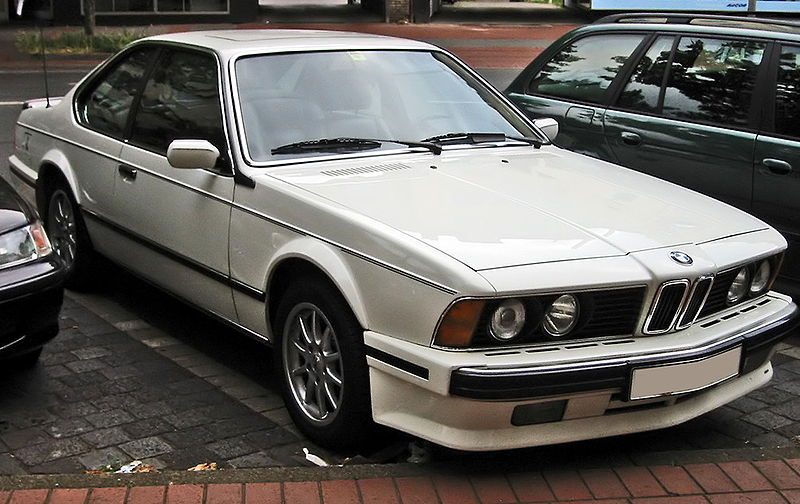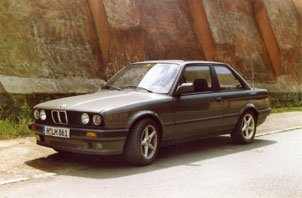BMW was founded by Karl Friedrich Rapp, originally as an aircraft engine manufacturer, Bayerische Flugzeug-Werke. The Milbertshofen district of Munich was chosen, apparently because it was close to the Gustav Otto Flugmaschinenfabrik site. The blue-and-white roundel BMW still uses (illustrated above right) alludes to the white and blue checkered flag of Bavaria. It is often said to symbolize a spinning white propeller on a blue-sky background, although this interpretation developed after the logo was already in use. [1]
In 1916 the company secured a contract to build V12 engines for Austro-Daimler. Needing extra financing, Rapp gained the support of Camillo Castiglioni and Max Friz, the company was reconstituted as the Bayerische Motoren Werke GmbH. Over-expansion caused difficulties; Rapp left and the company was taken over by the Austrian industrialist Franz Josef Popp in 1917, and named BMW AG in 1918. [2]
After World War I, the Treaty of Versailles (1919) prohibited the production of aircraft in Germany. Otto closed his factory and BMW switched to manufacturing railway brakes.[2]
In 1919 BMW designed its first motorcycle engine, used in a model called the Victoria, which was built by a company in Nuremberg. [3]
In 1923 BMW built its first model motorcycle, the R32. This had a 500 cc air-cooled horizontally-opposed engine, a feature that would resonate among their various models for decades to come, albeit with displacement increases and newer technology. The major innovation was the use of a driveshaft instead of a chain to drive the rear wheel. For decades to follow, the shaft-drive boxer engine was the mark of the BMW motorcycle. [3]
In 1927 the tiny Dixi, an Austin Seven produced under licence, began production in Eisenach. BMW bought the Dixi Company the following year, and this became the company's first car, the BMW 3/15. By 1933 BMW were producing cars that could be called truly theirs, offering steadily more advanced I6 sports and saloons (sedans). The pre-war cars culminated in the 327 coupé and convertible, the 328 roadster, fast 2.0 L cars, both very advanced for their time, as well as the upscale 335 luxury sedan.
[edit] World War II
BMW motorcycles, specifically the BMW R 12 and the BMW R 75 combination were used extensively by the Aufklärungsabteilung of German panzer and motorised divisions of the German Army, Waffen SS and Luftwaffe.
BMW was also a major supplier of engines to the Luftwaffe and of engines and vehicles, especially motorcycles, to the Wehrmacht. Planes using the aero-engines included the BMW 801, one of the most powerful available. Over 30,000 were manufactured up to 1945. BMW also researched jet engines, producing the BMW 003, and rocket-based weapons. BMW has admitted to using between 25,000 and 30,000 slave labourers during this period, consisting of both prisoners of war and inmates of infamous concentration camps such as Dachau [3].
The BMW works were heavily bombed towards the end of the war. Of its sites, those in eastern Germany (Eisenach-Dürrerhof, Wandlitz-Basdorf and Zühlsdorf) were seized by the Soviets. The factory in Munich was largely destroyed [4].
[edit] Post-war history
After the war the Munich factory took some time to restart production in any volume. BMW was banned from manufacturing for three years by the Allies and did not produce a motorcycle, the R24, until 1948, and a car model until 1952 [5].
In the east, the company's factory at Eisenach was taken over by the soviet Awtowelo group which formed finally the Eisenacher Motor-Werke. That company offered "BMWs" for sale until 1951, when the Bavarian company prevented use of the trademarks: the name, the logo and the "double-kidney" radiator grille.
The cars and motorcycles were then branded EMW (Eisenacher Motoren-Werke), production continuing until 1955.
In the west, the BAC, Bristol Aeroplane Company, inspected the factory, and returned to Britain with plans for the 326, 327 and 328 models. These plans, which became official war reparations, along with BMW engineer Fritz Fiedler allowed the newly formed Bristol Cars to produce a new, high-quality sports saloon (sedan), the 400 by 1947, a car so similar to the BMW 327 that it even kept the famous BMW grille.
In 1948 BMW produced its first postwar motorcycle and in 1952 it produced its first passenger car since the war, However, its car models were not commercially successful; models such as the acclaimed BMW 507 were too expensive to build profitably and were low volume. Moreover, following the huge state subsidies of the war the company had difficulties adopting a cost concious culture making all the models of the 50's non profitable. By the late 1950s, it was also making bubble-cars such as the Isetta. In 1959 BMW's management suggested selling the whole concern to Daimler-Benz. Major shareholder, Herbert Quandt was close to agreeing such a deal, but changed his mind at the last minute because of opposition from the workforce and trade unions and advice from the board chairman, Kurt Golda. Instead Quandt increased his share in BMW to 50% against the advice of his bankers, and he was instrumental in turning the company around.
That same year, BMW launched the 700, a small car with an air-cooled, rear-mounted 697 cc boxer engine from the R67 motorcycle. Its bodywork was designed by Giovanni Michelotti and the 2+2 model had a sporty look. There was also a more powerful RS model for racing. Competition successes in the 700 began to secure BMW's reputation for sports sedans.
At the Frankfurt Motor Show in 1961, BMW launched the 1500, a powerful compact sedan, with front disc brakes and four-wheel independent suspension. This modern specification further cemented BMW's reputation for sporting cars. It was the first BMW to officially feature the "Hofmeister kink", the rear window line that has been the hallmark of all BMWs since then.
The "New Class" 1500 was developed into 1600 and 1800 models. In 1966, the two-door version of the 1600 was launched, along with a convertible in 1967. These models were called the '02' series—the 2002 being the most famous—and began the bloodline that later developed into the BMW 3 Series.
By 1963 the company is back on its feet, BMW now offers dividends to its shareholders for the first time since before World War II.
In the mid Sixties, the Munich plant reaches the limits of its production capacity. At first BMW plans to build an entirely new factory, but instead buys, in 1966, the crisis-ridden Hans Glas GmbH with its factories in Dingolfing and Landshut. Both plants are restructured, and over the coming decades the world's largest BMW plant takes shape in Dingolfing.
In 1968, BMW launched its large "New Six" sedans, the 2500, 2800, and American Bavaria, and coupés, the 2.5 CS and 2800 CS.
Of major importance to BMW is the arrival of Eberhard von Kuenheim from Daimler-Benz AG. Just 40 years old, he presides over the company's transformation from a national firm with a Europe-wide reputation into a global brand with international prestige.
Already commercially successful by the mid 60s, in December 1971, BMW moved to the new HQ present in Munich, architecturally modeled after four cylinders.
In 1972, the 5 Series was launched to replace the New Class sedans, with a body styled by Bertone. The new class coupes were replaced by the 3 Series in 1975, and the New Six became the 7 Series in 1977. Thus the three-tier sports sedan range was formed, and BMW essentially followed this formula into the 1990s. Other cars, like the 6 Series coupes that replaced the CS and the M1, were also added to the mix as the market demanded.
From 1970 to 1993, under von Kuenheim, turnover increases 18-fold, car production quadruples and motorcycle production triples.















